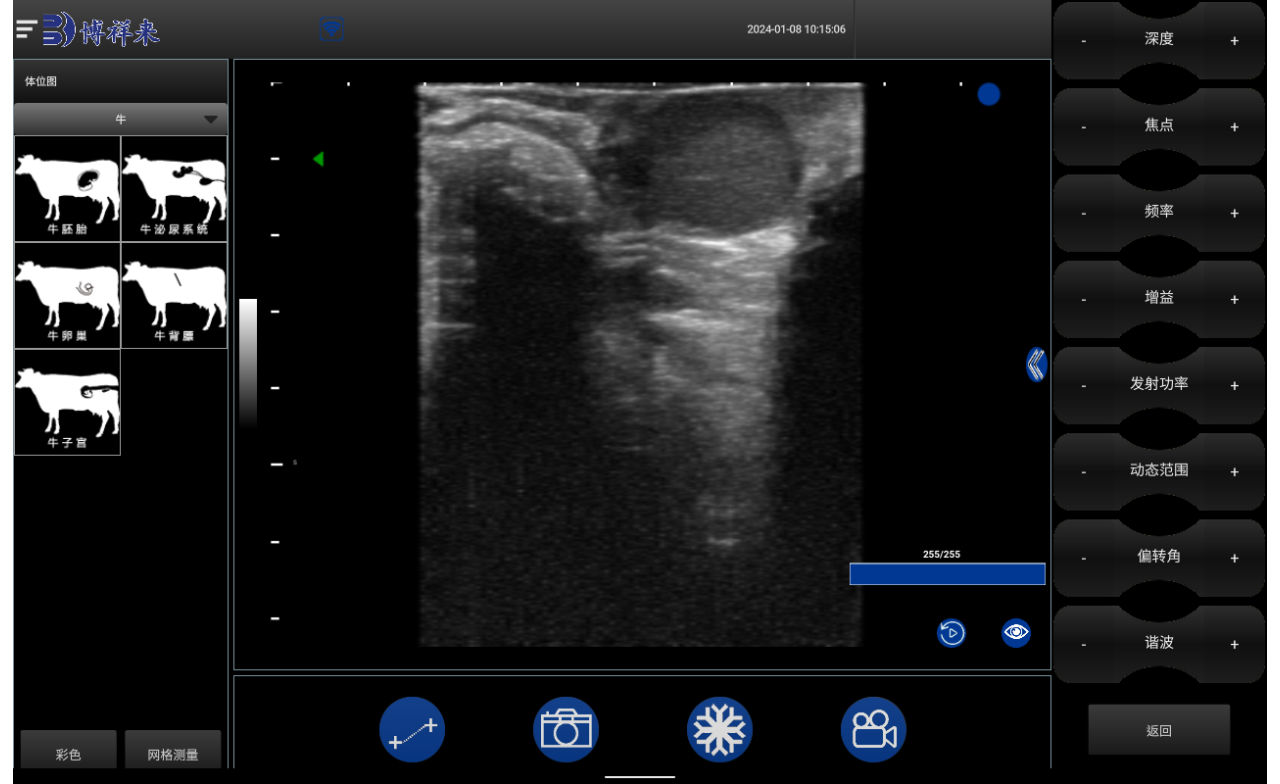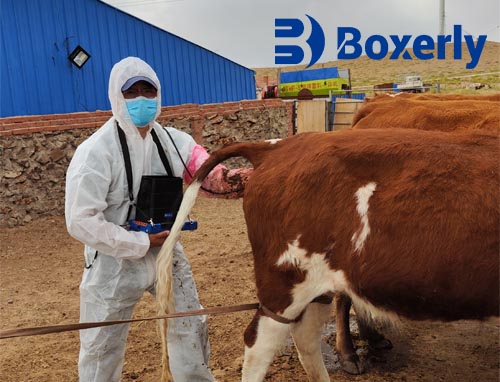Bezoars are solid masses of undigested material that accumulate in the gastrointestinal tract of animals. While they are a relatively rare condition, bezoars can cause significant health issues, including colic, discomfort, and even life-threatening blockages. In veterinary medicine, diagnosing and managing bezoars is challenging, but BXL ultrasonic testing of bezoars has emerged as a breakthrough diagnostic tool. This non-invasive, accurate imaging technique allows veterinarians to detect and assess bezoars with greater precision, leading to more effective treatments and improved outcomes for animals.
In this article, we will explore how BXL ultrasonic testing works, its benefits, and why it’s an essential tool for diagnosing and managing bezoar-related issues in animals.
What Are Bezoars?
A bezoar is a mass of indigestible material that can form in the stomach or intestines of animals. Bezoars can be composed of hair (trichobezoars), plant material (phytobezoars), or foreign objects ingested by the animal. In some cases, bezoars can cause a blockage, leading to digestive disturbances, pain, vomiting, and in severe cases, perforation of the gastrointestinal tract.
Bezoars are most commonly found in herbivores, such as ruminants (cows, sheep, goats), but they can also affect carnivores and omnivores, including dogs and cats. Detecting and diagnosing bezoars early is critical to preventing more serious complications, making BXL ultrasonic testing of bezoars a valuable diagnostic tool in veterinary medicine.
How Does BXL Ultrasonic Testing of Bezoars Work?
BXL ultrasonic testing is a non-invasive diagnostic technique that uses high-frequency sound waves to create real-time images of internal structures. The procedure is based on the principle that sound waves bounce off different tissues at different rates, allowing the ultrasound machine to create detailed images of the internal organs, including the gastrointestinal tract.
Key Steps in BXL Ultrasonic Testing of Bezoars:
- Preparation: The animal is positioned to allow access to the area being examined, typically the abdomen or gastrointestinal tract. The veterinarian may apply a small amount of ultrasound gel to the area of interest to ensure optimal sound wave transmission.
- Imaging: The ultrasonic probe is placed on the animal’s abdomen or other relevant areas, where it sends high-frequency sound waves into the body. These sound waves are reflected by tissues and internal structures, and the returning echoes are used to generate images.
- Analysis: The images produced by the ultrasound machine are analyzed by the veterinarian. Bezoars typically appear as areas of irregular, denser tissue within the gastrointestinal tract. The size, shape, and location of the bezoar are assessed to determine its impact on the digestive system.
Key Features of BXL Ultrasonic Testing for Bezoars:
- Real-Time Imaging: The technology allows for real-time visualization of bezoars and surrounding structures, helping veterinarians assess their size and location.
- Non-Invasive: Unlike endoscopy or surgery, ultrasonic testing does not require invasive procedures, reducing stress and risk for the animal.
- High-Resolution: BXL ultrasound machines provide high-resolution images that allow for precise detection and measurement of bezoars, even in the early stages of formation.
- Accurate Diagnosis: Ultrasound can distinguish bezoars from other gastrointestinal conditions, such as tumors, fluid accumulation, or foreign body ingestion.
Benefits of BXL Ultrasonic Testing of Bezoars
1. Early and Accurate Detection
One of the main challenges in diagnosing bezoars is the difficulty of detecting them before they cause significant problems. In many cases, bezoars can form gradually, and symptoms may not appear until the blockage becomes severe. BXL ultrasonic testing provides early detection of bezoars, allowing veterinarians to assess the condition before it progresses to an emergency. Early intervention can prevent severe complications, including bowel perforation or the need for surgery.
2. Non-Invasive and Stress-Free
Traditional methods for diagnosing bezoars, such as exploratory surgery or endoscopy, can be invasive, costly, and stressful for the animal. BXL ultrasonic testing is a completely non-invasive procedure, which means it can be performed quickly and without causing the animal undue stress. This is particularly important for small or vulnerable animals, such as young or elderly pets, who may not tolerate invasive procedures well.
3. Real-Time Visualization
Unlike traditional X-rays or radiographs, BXL ultrasound provides real-time images, allowing veterinarians to track the size, movement, and potential complications of the bezoar during the procedure. This dynamic, interactive approach helps vets make immediate decisions about treatment options, which is crucial for managing animals with gastrointestinal issues.
4. Precise Localization and Assessment
BXL ultrasonic testing enables veterinarians to precisely locate the bezoar within the gastrointestinal tract. This is crucial for determining whether the bezoar is causing a blockage and assessing how much of the digestive tract is affected. Ultrasound can also help determine whether the bezoar is attached to other tissues, which may complicate removal.
5. Monitoring Treatment Progress
In some cases, bezoars may be treatable without surgery, using methods such as dietary changes, laxatives, or enzymatic treatments. BXL ultrasound can be used to monitor the progress of treatment by tracking changes in the size of the bezoar over time. This allows veterinarians to evaluate the effectiveness of non-invasive treatments and adjust the approach if necessary.
6. Reduced Need for Surgery
The ability to detect and monitor bezoars non-invasively can reduce the need for surgical interventions. While surgery may still be necessary in severe cases, BXL ultrasound can help determine whether a bezoar is likely to resolve on its own or with less invasive treatments, helping to avoid unnecessary procedures.
Applications of BXL Ultrasonic Testing of Bezoars
1. Ruminants (Cattle, Sheep, Goats)
In ruminant animals, bezoars often form from ingested plant material or hair and can cause severe gastrointestinal issues. For example, in cattle, a bezoar may form due to the ingestion of large amounts of fibrous material or undigested food. BXL ultrasound can be used to detect bezoars in the rumen or intestines, helping farmers and veterinarians make informed decisions about treatment and management.
- Early Detection: By detecting bezoars early, veterinarians can prevent serious complications, such as bloating or colic.
- Accurate Assessment: The ability to assess the size and location of bezoars can help determine the best treatment approach, whether it’s dietary changes, enzymatic therapy, or surgery.
2. Small Animals (Dogs and Cats)
In dogs and cats, bezoars are typically caused by the ingestion of hair (trichobezoars) or other foreign materials. BXL ultrasonic testing can help diagnose these conditions without the need for invasive procedures. For example, in cats, trichobezoars (hairballs) are common, and ultrasound can help evaluate their size and determine whether they are causing gastrointestinal blockages.
- Non-Invasive Diagnostic Tool: For pet owners, ultrasonic testing offers a non-invasive and stress-free alternative to traditional methods of diagnosis.
- Management of Hairballs: For cats, ultrasound helps track the size of hairballs, enabling veterinarians to recommend appropriate treatments, such as dietary adjustments or medications.
3. Equine Bezoar Detection
Although less common in horses, bezoars can also form in equine gastrointestinal systems, particularly in cases of poor digestion or ingesting foreign objects. BXL ultrasound can help detect bezoars in horses, allowing for early intervention before more severe problems like colic or intestinal rupture arise.
4. Exotic Animals (Zoo and Wildlife Medicine)
Bezoars can also affect exotic animals, including primates, birds, and reptiles. BXL ultrasound testing provides a valuable tool in wildlife and zoo animal medicine, allowing veterinarians to detect bezoars in a range of species and develop effective treatment strategies.
Cost of BXL Ultrasonic Testing of Bezoars
The cost of BXL ultrasonic testing of bezoars varies depending on several factors, such as the animal’s species, the complexity of the exam, and the location of the veterinary practice. On average, a standard ultrasound exam for bezoar detection may cost between $100 and $500. However, the ability to diagnose bezoars early and avoid costly surgeries or prolonged treatments makes ultrasound a cost-effective tool in the long run.








